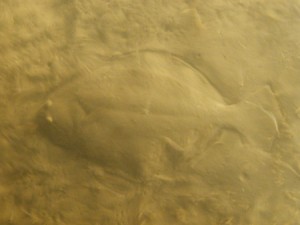Flounder Lights!
Ever since I posted about CFL Flounder lights I have seen an increase in people coming to look at that post. What has been amazing to me is the different search terms that get them here. I think I have some understanding why they are looking.
 The use of Flounder Lights to gig flounder at night of course started with kerosene lamps. There are still people that do it that way. One benefit of kerosene is how quiet they are. The use of gas, propane, or generator powered flounder lights has taken some of the peacefulness and enjoyment out of the experience.
The use of Flounder Lights to gig flounder at night of course started with kerosene lamps. There are still people that do it that way. One benefit of kerosene is how quiet they are. The use of gas, propane, or generator powered flounder lights has taken some of the peacefulness and enjoyment out of the experience.
The trade off for the new technology was that the increase in lighting outweighed the noise. The times have changed and now newer technologies are offering the same amount of light without disturbing the solitude of flounder gigging.
Whether you are looking for a more peaceful night on the water or a cheaper way to power your flounder lights the evidence shows that people are looking for alternative ways. Many of the traditional ways of the past can still be employed. The ultimate way that still has not reached an economical point yet is the LED flounder lights.
Once the LED technology hits the economic point that it can be used on the water you will also see them be more common. The reason that they will take over is the high light output, low energy cost, and ability to operate very well in the conditions.
 These conditions can be compared to all the other ways that we associate with lighting. There are still some that enjoy lighting via kerosene. While camping many have gone to propane lanterns. In your house you probably have a mixture of incandescent, CFL (compact fluorescent light), and LED (light emitting diode).
These conditions can be compared to all the other ways that we associate with lighting. There are still some that enjoy lighting via kerosene. While camping many have gone to propane lanterns. In your house you probably have a mixture of incandescent, CFL (compact fluorescent light), and LED (light emitting diode).
Whether you are talking about a night on the water with flounder lights, camping, or around the house the way that we are powering light is changing. The reasons we are employing it is generally cheaper, quieter, or cooler than what we have used in the past. I still like the incandescent bulb for certain applications just not for my flounder lights any more.

Pingback: 1 important thing to plan on your solar projects is battery venting!